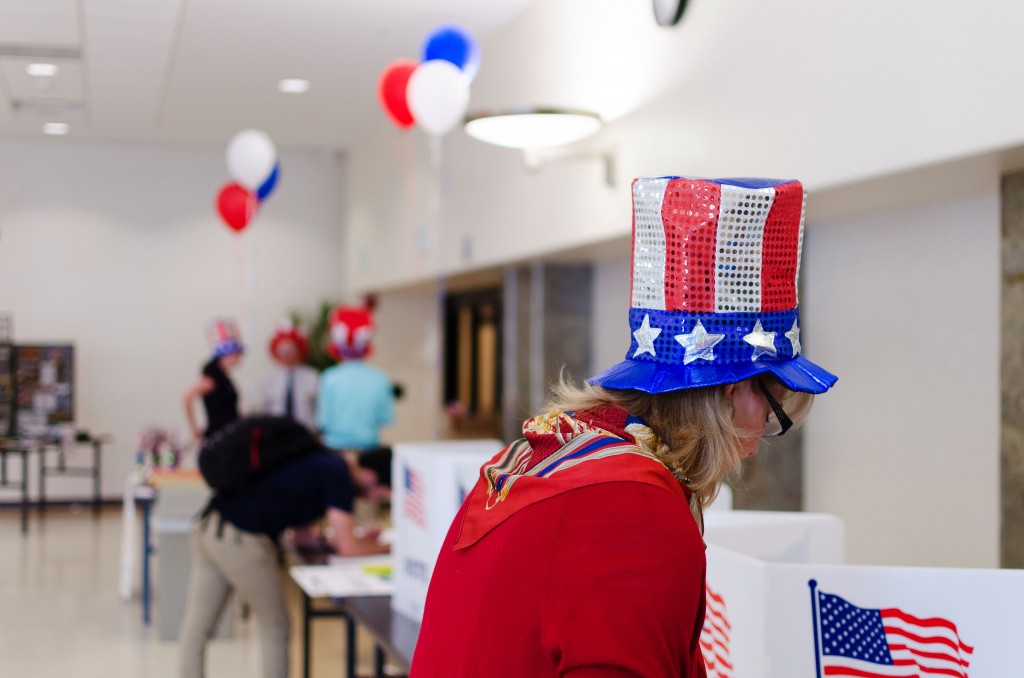
For months, community organizers campaigned on campus, not for students to vote for any candidate in particular, but for students to vote for any candidate at all. And on election day, hundreds of students turned out to vote in the University Union.
From 6 a.m. to 9 p.m., staff members of the Center for Civic Engagement (CCE) and volunteers from the area signed in over 330 students to vote on Tuesday for state-wide and local candidates.
According to Nicholas Doran, the Vote Everywhere ambassador for the CCE and a sophomore majoring in economics, only 148 students voted in the last midterm elections in 2010, but the CCE aimed to have between 300 and 500 students vote this year.
Typically, students do not vote in high numbers during midterm elections, said Jessica Arends, the faculty engagement associate for the CCE. To get students interested in the election, members of the CCE handed out flyers around campus and posted on Twitter and Facebook encouraging students to vote. They also held voter information sessions and a campus-wide voter registration drive in October.
“Non-presidential years are very tricky,” Arends said. “There’s not as much excitement or interest but we’ve done a lot of social media and a lot of preparation to get students in the door.”
She explained that on election day, the CCE distributed materials to students to help them understand which precinct they were in, where they should vote and what the issues were.
The CCE also provided information online and in person at the Union that explained platforms of all the candidates as well as the three additional proposals included on the ballot, which dealt with issues such as redrawing district boundaries and allocating money for technology in schools.
Doran said he encouraged students to get involved in local elections because of the opportunities they have to spark changes in the Binghamton area and the state. According to him, there are approximately 7,000 students on campus registered to vote, 800 of whom were registered during this year’s registration drive.
“It’s important for college students to vote because voting is a way for people to get their voice heard and to make a difference in the community,” Doran said. “Without it you don’t have as big a role in shaping the direction of the nation and what’s going on around you.”
According to Austin Blumenfeld, a senior majoring in political science and a democratic campaigner, the student turnout helped democratic candidate Kim Myers win a seat on the Broome County Legislature. He said nearly 80 percent of on-campus votes were for her.
“She sent mailers out days before the election with ten reasons why students should vote for her and she came to campus on election day,” Blumenfeld said. “She engaged with students and it paid off because without the student vote she wouldn’t have won.”
Wyatt Chartrand, a senior double-majoring in finance and leadership, said he he cast his vote because it was his right as a citizen, not necessarily because of its implications.
“At this point it’s symbolic,” Chartrand said. “New York is heavily a blue state so whichever way I vote it won’t make much of a difference in a vacuum.”
Other students said they did not vote because they did not have time to keep up with local politics. Donovan Borger, a senior majoring in English, said he did not want to vote in the local elections because he felt he was not informed enough about local issues.
“I haven’t spent enough time reviewing the candidates, I’ve put my studies ahead of the elections,” Borger said. “I’m not voting in these elections because I don’t really have anything to intellectually bring to the conversation.”
Democrat Andrew Cuomo and Republican Thomas Libous were both reelected to office, holding their respective positions as New York Governor and State Senator.


